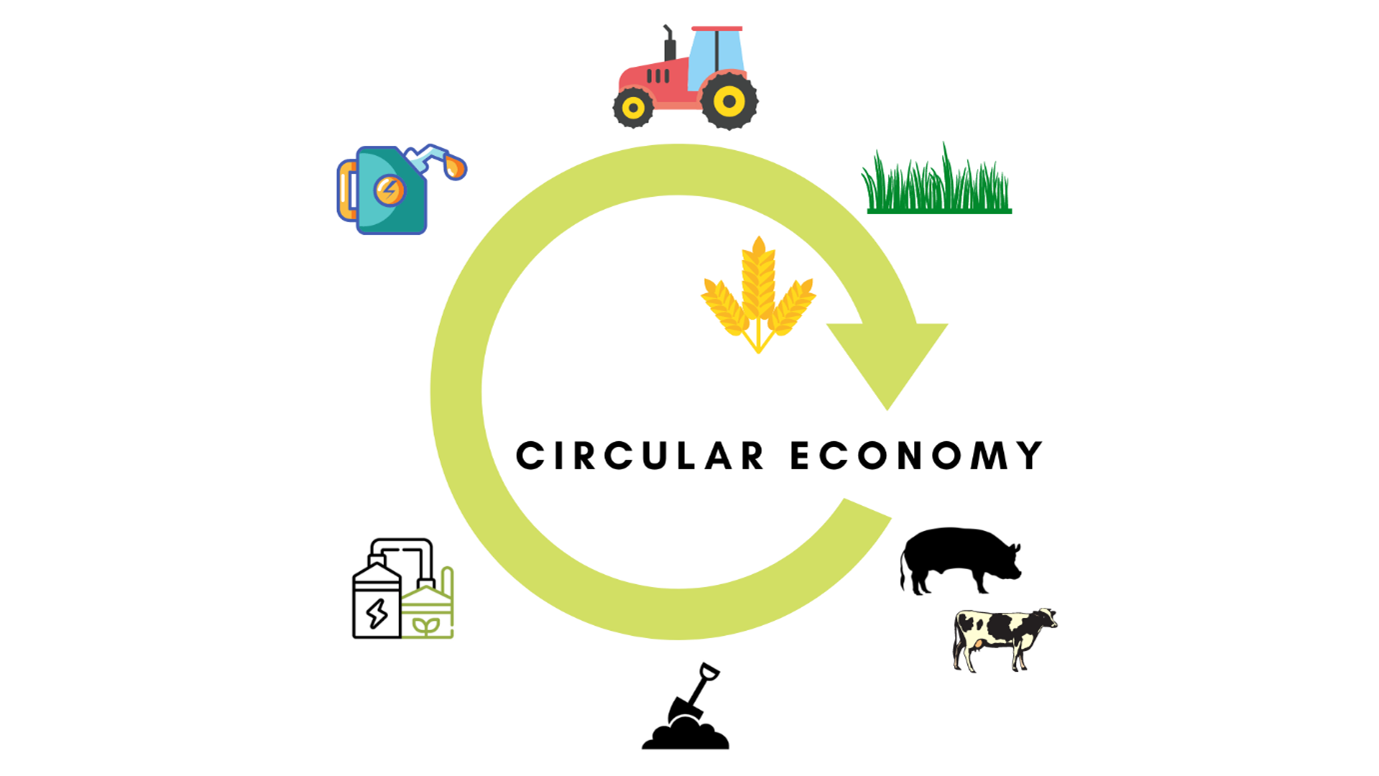- Home
- Knowledge library
- Green fuels for the agricultural sector – ammonia, hydrogen and methane
Green fuels for the agricultural sector – ammonia, hydrogen and methane
As agriculture moves towards the target of becoming net zero by 2050, we look at some of the opportunities provided by green fuels such as ammonia, hydrogen and methane.
What are green fuels?
Green fuels are produced without extraction, processing or direct use of fossil fuels. In an agricultural setting, ammonia from slurry and methane from anaerobic digestion (AD) can be used as fuels and are sources of hydrogen.
The electrification of transport and power systems is key as we move towards becoming net zero. However, there are some situations (such as long distances, high power demands or remote working) that rely on systems where the fuel or energy source is carried by the vehicle and which can be easily refuelled.
There are many fuels that can be used as alternatives to petrol or diesel, such as biofuels, gases and other combustible chemicals.
Agriculture is a viable source of the following green fuels:
- Ammonia
- Methane
- Hydrogen
Hydrogen can be extracted from ammonia and methane to be burnt or used in fuel cells.
Podcast: How can pig farmers become more energy efficient as we move towards net zero?
How can green fuels be extracted?
Ammonia is released through the natural breakdown of manures and slurries by bacteria and other microorganisms.
In the UK, there is a substantial effort to reduce the amount of ammonia released from agricultural wastes to the surrounding environment. Technology, such as acidification and slurry cooling, helps reduce emissions from slurry but leave the ammonia in the manures. This product has an intrinsic value not just as a fertiliser (although bagged chemicals are cheaper, they are less sustainable) but also as a fuel.
Attaining ammonia from slurry waste starts with separating the solid waste from the liquid waste. This can be done through careful design of the slurry pit floor and a combination of scrapers and guttering, or a flushing system and inclined separator.
With the liquid fraction separated, it is left to settle. The ammonia-rich fraction is then passed through a downflow gas contactor (DGC) reactor and removed. The unused liquid can either be spread as normal (but is now lower in nitrogen) or returned and reused for the flushing system.
Methane is obtained through the digestion of the solid fraction or manure. When fed into an AD plant, it will generate methane and digestate – a valuable fertiliser with a high amount of bioavailable nutrients.
Ammonia and methane can both be used to extract hydrogen, in the case of ammonia, through simple hydrogen electrolysis. While methane is also a source of hydrogen, it is already a viable fuel, with commercial systems able to use it in its current form. These include combined heat and power (CHP) engines, which provide heat and electricity for the farm and to sell to the grid, or as a fuel alternative to traditional diesel engines.
Uses of green fuels in agriculture
The electricity demand for producing livestock is a relatively low percentage of the agricultural carbon footprint. In pigs, it varies between 4–12% of the total carbon footprint (CIEL, 2020). While this represents a relatively small contribution to carbon emissions, reducing it further is still a vital step towards becoming net zero.
On-farm systems such as anaerobic digestion (AD), even in a smaller form (micro AD), can generate more power and heat than a farm needs. This means renewable energy can be returned to the national grid.
This contribution to reducing our carbon footprint is an important marketing point for UK livestock production as it shifts the narrative of livestock agriculture being a net contributor to global climate change to being a solution.

New technologies and tools are available to help farms move towards becoming carbon neutral. For example, tractor manufacturers are working on fuel systems to replace diesel. Tractors that run on both hydrogen as a hybrid system or methane as a sole fuel source are now available.
Using ammonia as a fuel is an emerging technology but offers similar opportunities for UK farmers. Electrolysis can be used to extract hydrogen from ammonia, providing an increasingly valuable commodity to other industries – primarily power and transport.
The supply of green fuels that are convenient and easy to use, such as these, can help the agricultural sector move towards becoming net zero and offset emissions. This cements the view of livestock being part of the solution rather than the problem.
Uses for green fuels in society
Hydrogen and ammonia have been suggested by the Government as being part of the solution to replace petrol and diesel vehicles.
Light haulage and cars will be able to capitalise on these the most, with both aviation and shipping looking to use ammonia and methane (as alternatives to heavy fuel oil or LPG) over the next few years.
Use of livestock wastes for anaerobic digestion
Anaerobic digestion (AD) is one of many tools that can help the agricultural sector move towards becoming net zero. It also offers other benefits to farmers and growers.

